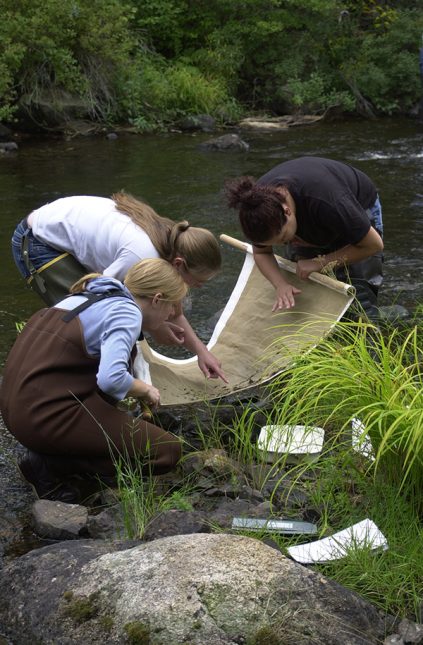Prepare for a career in the growing field of Environmental GIS.
Our interdisciplinary curriculum incorporates coursework in geospatial technology, data acquisition, environmental studies, geographic inquiry, computer and data science, programming, and design.
Each course in the program is included to address skills, knowledge and competencies outlined in the US Department of Labor Geospatial Technology Competency Model and emerging workforce needs as identified by the US Department of Labor and workforce research.
Courses incorporate hands-on, applied projects that not only reinforce course skills and competencies, they also teach soft skills required for career success such as critical thinking, project management, oral and written professional communication, ethics, initiative, etc.
Learning Objectives
Upon completion of the Environmental GIS program core and the UMaine Machias General Education requirements, students will:
- demonstrate geographic, environmental and spatial awareness of the human and natural world through geospatial inquiry and hypothesis-driven analysis
- demonstrate proficiency in the use of GIS applications
- demonstrate proficiency in multiple modes of communication with professional, management, and lay audience
- be able to create or acquire data using appropriate technologies and applying best practices for processing, documentation, quality control and critical assessment
- be able to evaluate the qualitative and quantitative uncertainty and limitations of data
- demonstrate proficiency with database management, data modeling, and query
- demonstrate basic proficiency in GIS application development using at least one widely used programming language
- execute a project applying geospatial technology to a specific problem of the natural or human world in collaboration with a community partner through a capstone project
- be able to critically evaluate and creatively solve problems relating to geospatial questions and environmental issues
Program Competency Domains:
- Geographic, environmental and spatial awareness and inquiry
- GIS applications
- Data visualization, graphic and cartographic design
- Data acquisition, processing, documentation, and quality control
- Computer information science and database management
- Basic application development using at least one widely used programming language
- Communication
- Project management
- Problem solving and critical thinking
Community Applications Concentration 🌐
The Community Applications concentration prepares students for careers or graduate study in planning, land conservation, community resilience and sustainability.
The 18-credit concentration combines coursework in community studies and related social sciences with tools and practices used in community and regional planning, government, and land records management. This pathway is available in both on-campus and online formats.
Learning Objectives
Upon completion of the Community Applications concentration student will:
- demonstrate proficiency in common applications of geospatial technology for communities, such as land use planning, land records, environmental decision making, stormwater and utility management, etc.
- demonstrate an understanding of socioeconomic, cultural and geographic factors affecting community resilience
- demonstrate an understanding of local and regional community governance and management practices
Spatial Data Science Concentration 🌐
The Spatial Data Science concentration prepares students for careers or graduate studies in spatial data science, GIS application development, and geomatics. This 17–18 credit incorporates quantitative analysis and programming skills necessary for work in application development and research or conservation analytics.
Learning Objectives
Upon completion of the Spatial Data Science concentration student will:
- demonstrate basic proficiency with standard query language (SQL)
- demonstrate proficiency in differential calculus
- demonstrate proficiency in spatio-temporal information analysis
Ecological Applications Concentration
The Ecological Applications concentration prepares students for careers or graduate study in the biological and ecological sciences and conservation. Potential employers are state and federal agencies, tribes, resource extraction industries, and non-profit organizations.
This 18–20 credit concentration incorporates field-based courses in biology and ecology. Students must take a minimum of three semesters of courses on campus.
Learning Objectives
Upon completion of the Ecological Applications concentration student will:
- demonstrate an understanding of biological and ecological concepts
- apply knowledge of ecological systems to evaluate data used in GIS projects and the maps produced
- demonstrate knowledge of a particular group of organisms and the ability to use that group as a model for understanding other groups
- demonstrate proficiency in the use of advanced GIS tools and applications to ask and answer questions about ecological systems
🌐 Denotes a program that can be completed 100% online.
Degree earned
Bachelor of Science in Environmental Geographic Information Science


More ways to study geographic information systems at UMaine Machias
➜ Get a jump-start in GIS through an early college pathway for high school students, free to qualifying Maine students.
➜ Earn certificates in beginner and advanced GIS applications, suitable for undergraduates and as a post-baccalaureate certification for those already working in the field.
➜ Add a minor in geographic information systems to another program of study and gain the technical skills you’ll need to compete in the workforce.
